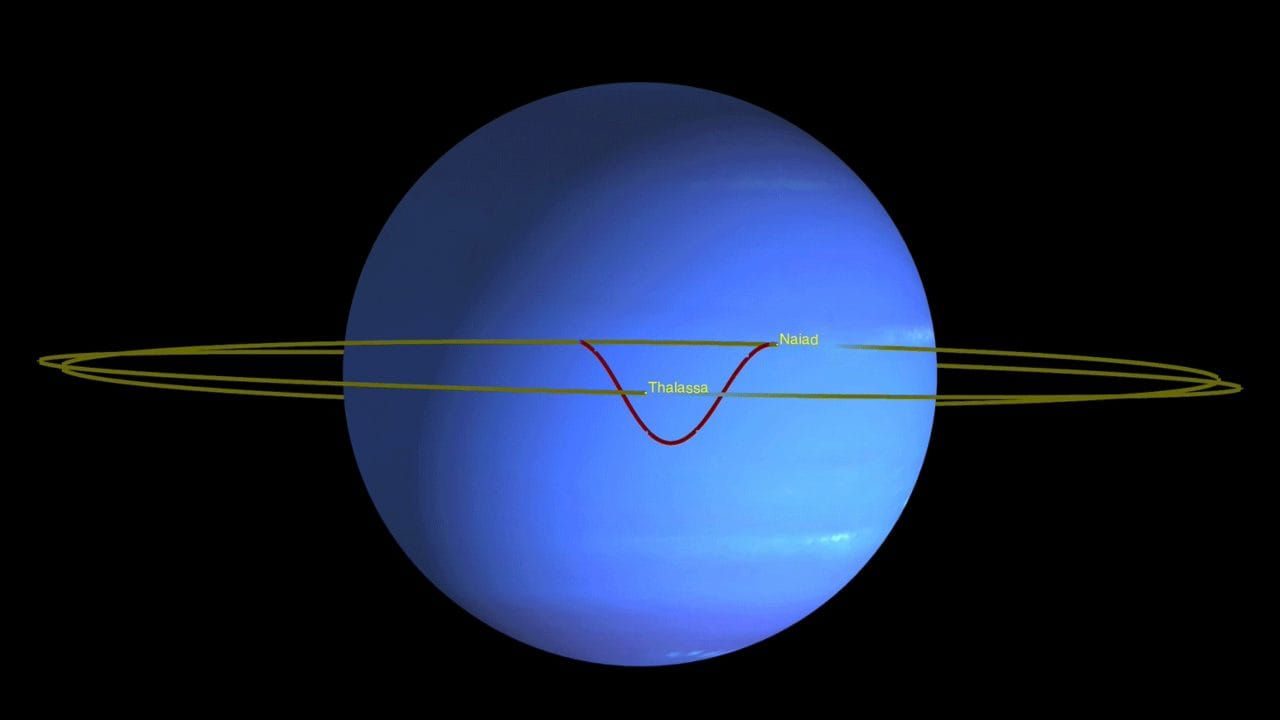By: Andrew Lu
Recently, scientists discovered something about Neptune that they’ve never seen before. Actually, it is not exactly about Neptune, it’s about two strange little moons that circle the planet.
Neptune’s two nearest moons; Naiad and Thalassa, both orbit the planet around every 7 hours. This means that the moons orbit very closely together. But how is this possible?
Neptune is the furthest and the outmost planet in our solar system deemed the only planet you can’t see with your naked eye. NASA’s last visit to the planet was when Voyager 2 zipped by the planet in 1989 and snapped a few memorable photos of the planet, alas, only so much is known.
What’s even harder to see is the moons. Only recently, the 14th moon was officially discovered. But with a combination of Earth-based telescopes and data from the Hubble Space Telescope, scientists have discovered a strange little “dance” that keeps the two moons from colliding. This strange salsa of the two moons is unlike anything we’ve seen in the universe.
Sometimes, the two moons are only 1,150 miles apart. Naiad’s orbit is tilted due to Thalassa’s orbit, but whenever Naiad laps Thalassa four times, the moon would zip up and down (like a wave) and pass Thalassa twice from above and twice from below.
If it weren’t for the perfectly timed waving motion, the two moons would have to have a head-on collision with each other. It looks like every time they line up, they stray as far as possible from one another.
This strange orbital resonance was probably set up in the astronomical past. Long ago, astronomers guess that Neptune probably stole its largest moon, Triton from the Kuiper Belt (that’s where the icy worlds of Eris and Pluto originate). The uninvited guest busted into the gravitational zone of Neptune, most likely threw off or completely annihilated small moons, forming most of Neptune’s moons. Naiad and Thalassa were lucky enough to have survived but got pushed very closely together, and that’s what triggered their orbital resonance.
Source: https://www.nytimes.com/2019/11/21/science/neptune-moons-orbit.html











